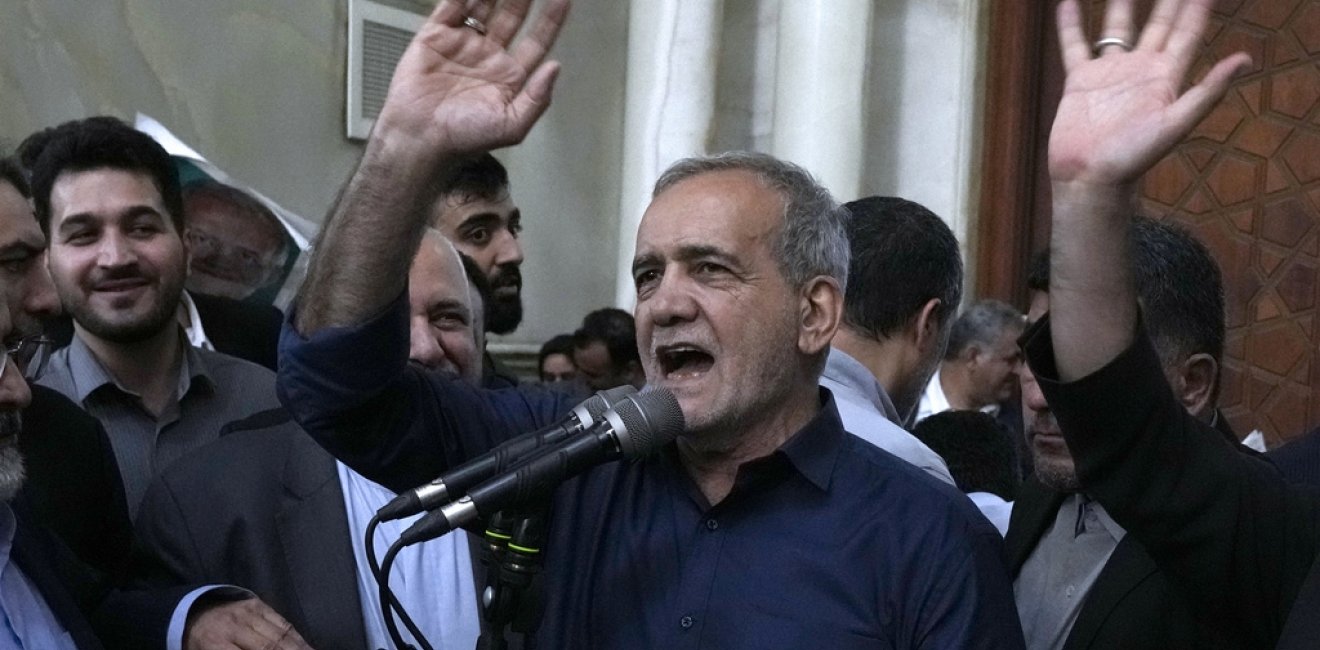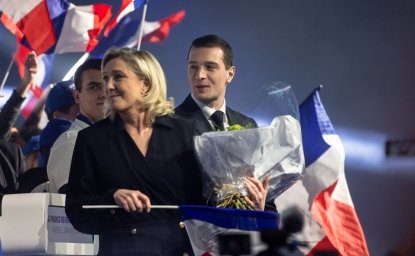The Iranian journalist and political commentator Ali Dashti once wrote, "Iran is a country of paradoxes and contradictions." In Friday's presidential elections, at a moment when hardliners seemed fully in control, the Iranian people elected a moderate and reformer, Masoud Pezeshkian, as their president—and by a margin of three million votes—over Ali Jalili, a regime insider who mouthed all the regime's hardline positions on internal security and foreign policy.
Two weeks ago, on the eve of the elections, a friend in Tehran told me that she and her circle of friends would not vote because the results were pre-determined, and Jalili would be the next president. But when the elections moved to a second round, and the choice was between Jalili and Pezeshkian, the same friend reported that her friends had now decided to vote because Pezeshkian would keep Jalili from the presidency.
The message that the substantial number of voters sent to the Supreme Leader, Ali Khamenei, and the government and parliament was that, given a choice, and if the elections are not rigged, they will elect a reformist
Voters say change
The message that the substantial number of voters sent to the Supreme Leader, Ali Khamenei, and the government and parliament was that, given a choice, and if the elections are not rigged, they will elect a reformist, who as president might succeed in promoting at least moderate change deeply desired by the people. At the same time, Iranian voters are realistic enough not to expect too much from their next president and his government.
Like his predecessors, Pezeshkian has paid the necessary homage to the Supreme Leader, who congratulated him on his election. In one of his first steps as president, Pezeshkian visited the shrine of Ayatollah Khomeini, the founder of the Islamic Republic. And he must have noted that in his post-election message, Khamenei expressed his hope that Pezeshkian “will follow the policy of the late president Ebrahim Raisi.”
Raisi was a hardliner at home and in foreign policy and led the crackdown on dissent and women. Pezeshkian well knows that, in the Islamic Republic, the ultimate decision-maker is the Supreme Leader and that parliament is there to rubber-stamp his decisions.
Nevertheless, Pezeshkian rode to victory, making a number of promises that resonated with the electorate. In his campaign, in the debates with other candidates, and in the weeks leading to voting, he focused on three topics: Social change, especially in regard to women’s attire and the role of the Morality Police on the streets; the dire economic situation in the country; and the need to reach out to the outside world.
He particularly stressed the need to restart negotiations over Iran’s nuclear program as a means to secure the lifting of the severe sanctions imposed on Iran by the US and the Europeans. He described the sanctions as the principal reason for the current sky-high inflation and the difficult economic conditions people are experiencing. The first thing my friend in Tehran told me the morning after the elections was, “Look! Pezeshkian was elected, the dollar fell (against the rial), and the stock market went up.” And indeed, the stock market experienced a surge.
On social issues, during the campaign, Pezeshkian argued that women should not be forced to comply with what the authorities feel is necessary for women to wear and should be left to decide for themselves whether or not to observe the hijab. (His daughter, who accompanied him on campaign stops, observed the hijab). Politically, he said people should be allowed to protest and not be arrested and imprisoned for expressing their views. In a country where the slightest dissent is punished by arrest and long prison terms, these were bold positions to take, contradicting the fundamental policies of the regime, the Supreme Leader, and the security agencies.
While Jalili argued, during the campaign, that Iran did not need the West and that its relations with Russia and China were sufficient guarantee of trade and economic well-being, Pezeshkian took the opposite view. He argued that improvement of economic conditions could come only through negotiations, an opening to the West, and revisiting the JCPOA, the nuclear agreement with Western and other powers that limited Iran’s nuclear programs, but from which Donald Trump, as president, withdrew, leading Iran to resume nuclear enrichment and the US and its allies to reimpose severe sanctions on the country. These policy positions explain the voter turnout for Pezeshkian. His promise to ease access to the internet, which the outgoing government sought to limit, also resonated with voters, particularly the young.
Challenges Ahead for Pezeshkian
The big question is whether the Supreme Leader will allow Pezeshkian the necessary leeway: to reach out and open negotiations with the West to ease sanctions, to lift restrictions on women, and to allow greater political freedom. It also remains to be seen whether the Majlis or parliament, in which the moderates are in the minority, will approve his cabinet choices and policy initiatives. The new president will be a member of the National Security Council. To what degree the council will follow Pezeshkian’s lead on critical security and foreign policy questions also remains to be seen.
One particularly important cabinet appointment will be that of the foreign minister. An interesting feature of Pezeshkian’s campaign was that of Javad Zarif, a former ambassador to the UN and foreign minister during the presidency of the reformist moderate Hassan Rouhani and one of the architects of the JCPOA agreement. Pezeshkian himself is a former minister of health and has been a member of parliament for many years. But he has little foreign policy experience.
Will Pezeshkian select Zarif as his foreign minister and will the Supreme Leader allow it? If so, we may expect a more moderate direction to Iran’s foreign policy—but this remains unlikely. Given Zarif’s savviness and his ease in dealing with foreign countries, Pezeshkian may appoint Zarif as his first vice president and his principal adviser on a number of issues.
One certainty is that Pezeshkian faces an uphill battle in his promise to pursue more moderate policies at home and abroad.
One certainty is that Pezeshkian faces an uphill battle in his promise to pursue more moderate policies at home and abroad. So seriously does he take this undertaking that he said during the campaign that he will not remain as president if all he finds are obstacles and obstruction blocking his way.
The views expressed in this piece are those of the author and do not express the official position of the Wilson Center.






